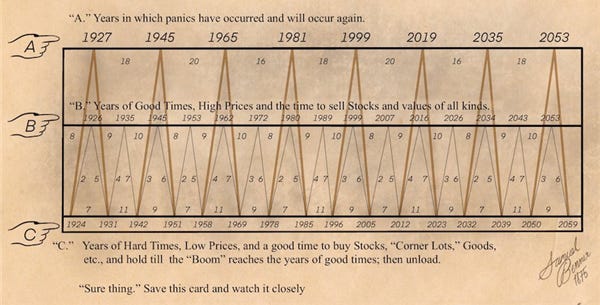Riding the Waves of Capitalism: Unraveling the Brenner Cycle
An influential theory that sheds light on the inevitable changes and underlying forces that drive economic fluctuations.
Key Takeaways
Competition, innovation, and profitability give rise to long-term economic cycles.
Innovation and competition drive short-term growth but long-term decline.
Capitalist economies are inherently prone to periodic crises.

The Brenner Cycle
Proposed by Robert Brenner, an American historian and Marxist scholar, who focused on long-term economic cycles and the development of capitalism. Brenner's analysis examines how economic cycles emerge from the inherent contradictions of the capitalist system, specifically focusing on the dynamics between competition, innovation, and profitability.
According to Brenner, the capitalist system periodically experiences long-term downturns due to the persistence of overcapacity and declining profit rates. In his view, the root of these problems lies in the competition among capitalists, which drives them to invest in new technologies and production techniques in order to outcompete their rivals. While these innovations can lead to temporary increases in productivity and profit, they ultimately contribute to an overall decline in profitability as competitors adopt the same technologies, resulting in overcapacity and reducing profit margins.
The Brenner Cycle is a key concept in debates about the historical development of capitalism and its inherent tendencies. Critics argue that it oversimplifies the complex economic and social factors that contribute to long-term economic fluctuations, while supporters maintain that it offers a valuable framework for understanding the cyclical nature of capitalist economies.
The Driving Forces: Competition, Innovation, and Profitability
The Brenner Cycle suggests that the inherent contradictions of capitalism - competition, innovation, and profitability - give rise to long-term economic cycles. As companies compete for market share, they invest in new technologies and production techniques to stay ahead of their rivals. While this initially boosts productivity and profit, it eventually leads to overcapacity and reduced profit margins as competitors catch up, causing economic downturns.
The rise of the automobile industry in the early 20th century exemplifies this pattern. Early innovators like Ford saw tremendous success, but as competitors adopted similar production methods and technologies, the industry became saturated, leading to a decline in profitability.
The Paradox of Capitalist Success
The Brenner Cycle highlights a paradox at the heart of capitalism: the very factors that drive short-term growth - innovation and competition - also sow the seeds for long-term decline. As companies push the boundaries of efficiency and productivity, they inadvertently contribute to an overcapacity that erodes profit rates and triggers economic downturns.
The dot-com bubble of the late 1990s and early 2000s illustrates this paradox. A surge in innovation and investment in internet-related companies initially led to rapid growth and high profits, but the frenzy of competition ultimately resulted in overvaluation, overcapacity, and a market crash.
The Inevitability of Crisis
According to the Brenner Cycle, capitalist economies are inherently prone to periodic crises. As overcapacity and declining profit rates persist, companies cut costs, reduce investment, and lay off workers, leading to reduced demand and deepening the economic downturn. Governments and central banks often intervene to stabilize the economy, but these measures only provide temporary relief and do not address the root causes of the crisis.
The 2008 financial crisis serves as a stark reminder of capitalism's tendency towards crisis. A combination of risky investments, overcapacity in housing markets, and declining profitability led to a severe economic downturn, despite government intervention.
Understanding the Brenner Cycle offers valuable insights into the cyclical nature of capitalist economies, highlighting the inherent contradictions that drive long-term economic fluctuations. By examining historical examples, we can better grasp how competition, innovation, and profitability interact, leading to both growth and crisis in capitalist systems. As we navigate the ever-changing landscape of the global economy, keeping the lessons of the Brenner Cycle in mind can help us prepare for and respond to the challenges and opportunities that lie ahead.


